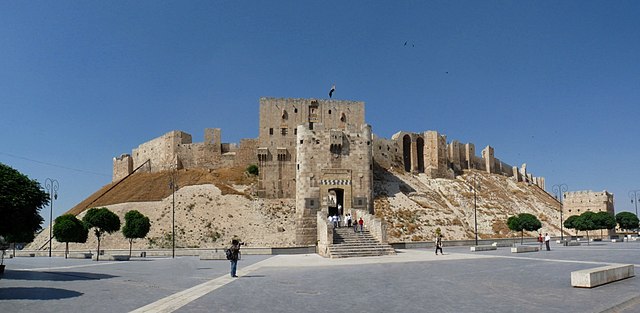Imad al-Din Zengi, also romanized as Zangi, Zengui, Zenki, and Zanki, was a Turkoman atabeg of the Seljuk Empire, who ruled Mosul, Aleppo, Hama, and, later, Edessa. He was the namesake and founder of the Zengid dynasty of atabegs.
Ruler in Turkic military dress: long braids, sharbush fur hat, boots, close-fitting coat. Maqamat by Al-Hariri of Basra (1054–1122), a high government official of the Seljuks. Mesopotamia, possibly Baghdad, 1237 copy.
The Citadel of Aleppo was fortified by the Zengids during the Crusades. Imad ad-Din Zengi, followed by his son Nur ad-Din (ruled 1147–1174), unified Aleppo and Damascus and held back the Crusaders from their repeated assaults on the cities.
Emperor John II directs the unsuccessful Siege of Shaizar against zengid territory, French manuscript 1338.
Death of Sanguius (Zengi) in "Histoire d'Outremer", Guillaume de Tyr MS, 1232-61, British Library.
Atabeg, Atabek, or Atabey is a hereditary title of nobility of Turkic origin, indicating a governor of a nation or province who was subordinate to a monarch and charged with raising the crown prince. The first instance of the title's use was with early Seljuk Turks who bestowed it on the Persian vizier Nizam al-Mulk. It was later used in the Kingdom of Georgia, first within the Armeno-Georgian family of Mkhargrdzeli as a military title and then within the house of Jaqeli as princes of Samtskhe.
Badr al-Din Lu'lu' was atabeg for the Zengid dynasty from 1211 to 1234. Kitāb al-aghānī fronstispiece, Mosul, 1218-1219. Vol IV. Cairo, Egyptian National Library, Ms Farsi 579





